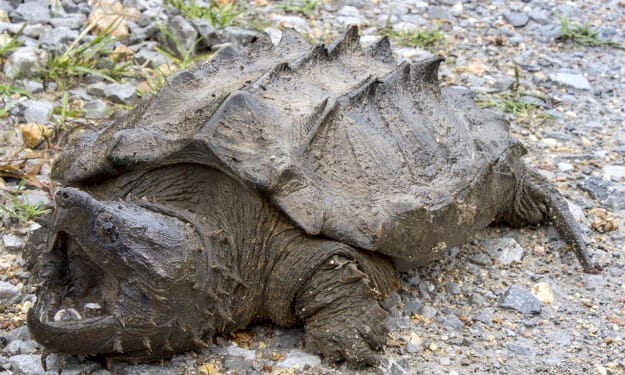
We often think of bats only around Halloween or when we watch horror films when Dracula turns into a bat. However, these little or large black mammals have been greatly misunderstood.
20 Percent of All Mammal Species
In the order Chiropetra there are over 1,200 species which means that bats represent one of the largest orders of mammals. They are only surpassed by the order Rodentia, which has 2,277 species. Megabats and Microbats are the two suborders of Chiroptera.

Megabats are more commonly known as fruit bats or flying foxes. They have excellent vision and love to eat fruit and nectar.

Microbats such as the painted bat of southeast Asia, are characterized by their use of echolocation and have an appetite for insects or blood.

All across the Planet
Since bats fly just like birds they can relocate and they can be found all over the Earth, except in the Arctic and Antarctic. They make their home in caves, crevices, foliage, and such manmade structures as attics and under bridges. In the U.S. alone there are at least 45 species with the most common being the little brown bat, the big brown bat, and the Mexican free-tailed bat.
Using Echolocation to Hunt Prey
Microbats aren’t blind but their perceptive strength lies in the fact that they have the ability to make use of echolocation, which is also known as biosonar. As they search for food bats continually emit a stream of high-pitched sounds that are only audible to other bats. When these sound waves collide with an insect or object that is nearby, these interrupted waves echo back and in turn, generate an acute sonic vision of the bat’s surroundings. This amazing ability is so extremely sensitive that it can detect objects as thin as a single human hair.
There are species that are equipped with specific characteristics allowing for more fine-tuned biosonar readings. Long-eared bats have prominent ears with geometric inner ridges that sharpen echolocation signals and let the bat have passive listening of sound that is produced by prey like a moth fluttering its wings. Other animals that can make use of biosonar are shrews, dolphins, and some cave-dwelling birds.
Saving Money on Agricultural Pest Control
How wonderful it is to have bats around when they can help people save billions of dollars a year in agricultural pest control. There is no need for harmful pesticides when a robust colony of bats is close by. A single bat has the ability to eat over 600 bugs an hour which makes them a perfect choice for organic pest control. Unfortunately, this might all change in the next decade because the North American bat populations face an uncertain future due to such threats as habitat loss and disease.
Able to Control Pregnancy and Giving Birth
Female bats have the ability to make sure external conditions are just right for a newborn bat. Therefore they are equipped with different biological tactics that let them put off fertilization, implantation, or development of the fetus. There are species that mate in the autumn and female bats store the sperm in their reproductive tract finally fertilizing their eggs in the spring. In other species even though fertilization of the egg occurs right away it does not implant to the wall of the uterus but floats around until conditions are more favorable. Another amazing ability in some bats is delayed fetus development in which fertilization and implantation occur as usual but the fetus stays in a dormant state for a long period of time. All of these tactics have been times in order to coincide with the high production of fruit or insects in the environment.
Living Off of Blood
No matter what Hollywood has told us, vampire bats don’t really suck blood. They make use of their razor-sharp teeth to make a small incision in the skin of a sleeping animal and consume the blood when it streams from the wound. Bats only need about two tablespoons of blood per day which means that the victim only loses a small amount of blood and it does them no real harm. Bat saliva has an anesthetic quality to it that is similar to that of a mosquito and this keeps the victim from feeling the cut.
A Vegetarian Lifestyle
Around 70% of all bats are insectivores (the exception is a small percentage that eat fish or drink blood). On the other hand, megabats are mostly frugivores preferring to eat fruit, pollen, and nectar. They are also referred to as flying foxes and play an important role in flower pollination and fruit seed dispersal. The dietary habits of these fruit bats are beneficial for rainforests which contain very large varieties of flora ready for consumption. These fruit bats are also prone to extinction due to deforestation and the inherently fragile state of rainforest ecosystems.

Hanging Upside Down to Conserve Energy
Wouldn’t it be great if we as humans could hang upside down in order to conserve energy? Unfortunately when a human hangs upside down too long they pass out. The difference between humans and bats is in their circulatory systems. The blood of humans pumps in the direction of their brains therefore when upside down even more blood is transferred to the head. In a bat, its circulatory system pumps in the opposite direction – away from the head. All mammals have valves in their veins which prevent blood from flowing backwards and bats also have these valves in their arteries. This ensures that blood is evenly distributed throughout the bat’s body. Therefore the bat conserves energy when it hangs by its feet. While hanging around upside down no energy has to be expanded because of the lightweight structure of the bat’s leg muscles and bones, developed for flight.
Only Mammals That Can Truly Fly
Some mammals such as flying squirrels, sugar gliders, and colugos can glide for short distances but bats are the only ones that can really fly. When birds are in flight they move their entire forelimbs but bats fly flapping only their webbed digits. Their wing membrane is sensitive and delicate and even though it can be easily torn it just as easily re-grows.

Thousands or Even Millions of Bats
Can you imagine sharing your home with thousands of other people? Of course not however bats share with even millions of other bats. Bracken Bat Cave in Texas is the world’s largest natural bat colony and is home to 20 million bats. During one night this bat colony has the ability to consume 200 tons of bugs. When these bats leave the cave to go seeking food weather radar picks up a dense cloud composed of their bodies.

In Austin, Texas you can find the world’s largest urban bat colony consisting of 1.5 million Mexican free-tailed bats roosting under the Ann W. Richards Congress Avenue Bridge. These bats spend their winters in Mexico and migrate to Austin from March to November. During this time residents and visitors get a nightly show when the bats head out looking for food.

American Bats and the White Nose Syndrome
The white fungus was discovered accumulating around the muzzles of hibernating bats by a cave explorer in Howe Caverns near Albany, New York in February 2006. Over the next several years this disease spread rapidly and today is documented in over 115 bat colonies across the eastern half of North America. White-nose syndrome is responsible for the deaths of at least 6 million bats. Scientists have identified the fungus as Geomyces destructans but haven’t come up with a solution to stop it from infecting more bats. Unless a solution is found the little brown bat, which is the most common species in North America might become extinct.
About the Creator
Rasma Raisters
My passions are writing and creating poetry. I write for several sites online and have four themed blogs on Wordpress. Please follow me on Twitter.






Comments
There are no comments for this story
Be the first to respond and start the conversation.